
What Is a Marketing Strategy?
Let’s start with what a marketing strategy is not: hiring someone to manage your social media accounts and upload TikToks. It is also not about running banner ads no one wants or clicks on.
A marketing strategy defines how a business grows through reaching, converting and retaining new customers.
And a clear marketing strategy defines measurable goals, validates the business challenge your brand solves in the marketplace, and communicates the customer outcomes your company delivers.
A marketing strategy:
- Defines how your company will grow by finding, converting and retaining new customers
- Aligns your team to the business goals marketing can solve (more revenue)
- Communicates the value your company delivers to the market
PS – I put together these 10 tips for optimizing your content marketing. Watch Now!
What exactly is a marketing strategy?
Back when I was in college, I learned that marketing is the art of convincing people to buy your stuff. In fact, if you google “what is marketing?” the first 4 search results define marketing as something that “persuades,” “promotes,” and “convinces” people to do something.
They are wrong! As I’ve explained so many times, Marketing is about understanding the needs of an audience, and helping them to become educated about the best way to solve that problem. It helps buyers buy. It makes their journey easier.
But if you are looking for a more academic definition:
A marketing strategy is the process of achieving business growth by reaching, engaging, converting, and retaining new customers through an understanding of their problems, and helping them to find a solution through marketing content, activities, and campaigns.
Like any well-defined strategy, a marketing strategy defines:
- What business outcomes you will achieve,
- What marketing activities you’re going to do, when and where you will do them
- Why you’re doing those marketing activities vs. others
- How you will achieve those results
- Who you are targeting (your ideal customer profile)
- Who is responsible for performing each activity (internal, agency, freelancer)
- How you will measure success and how much it costs (budget)
An effective marketing strategy considers digital marketing tactics such as content marketing, social media marketing, search marketing, as well as offline marketing activities such as events (try to make offline phygital when you can).
It should also include a balance of paid, owned, and earned media. Paid media includes paid search ads (PPC), digital display (banner ads), owned media includes content marketing, social media marketing, and email marketing, and earned media includes PR and link building.
For example, many small businesses and high flying SaaS companies want to acquire new customers and achieve predictable growth rates. Focusing on organic growth, content marketing, and testing conversion “pathways” allow these companies to achieve their goals without hiring big name CMOs or Madison Avenue advertising agencies.
PS – Check out our weekly blog content service to grow your website traffic and leads!
Marketing Strategy and the 4 Ps
My college professors taught me all about “the 4 Ps” of marketing—product (what you sell), price (how much is it), place (where do you sell it), and promotion (discounts and other offers). But this view is not just out-dated. It was wrong to begin with.
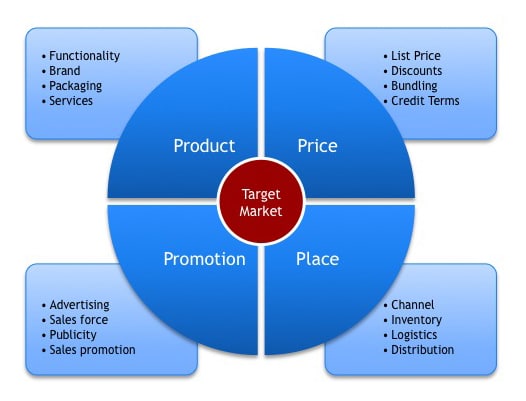
Second, while this may have worked before the internet changed the way we shop and buy consumer goods. It certainly doesn’t apply to B2B Marketing Strategy.
Here’s some proof: the top YouTube video on marketing strategy is all about doing better Instagram and Facebook ads! Ugh!!!
Today we have a few more Ps of Marketing. Here are at least 14 Ps of Modern Marketing:
- Purpose: what does your company exist? What problem does it solve?
- People: who are you targeting and who influences the purchase decision.
- Product: what are you selling. This is the easy one.
- Position: how do you compare to the market? What makes you different or unique?
- Price: how much are you selling for? Are you a premium or value brand?
- Personality: are you dry and boring or snarky?
- Process: Mapping content to the buyer journey has become a marketing mandate.
- Platforms: what tools and tech make up your martech stack?
- Place: Increasingly this is more of a digital marketing conversation.
- Promotion: Banner ads have issues but there are other ways of promoting your company.
- Performance: how will you measure the performance of your marketing?
- Proof: How can you show the business that what you’re doing is winning customers?
- Pictures: Marketing is becoming increasingly more visual.
- POV: Setting yourself apart with a thought leadership strategy is important too.
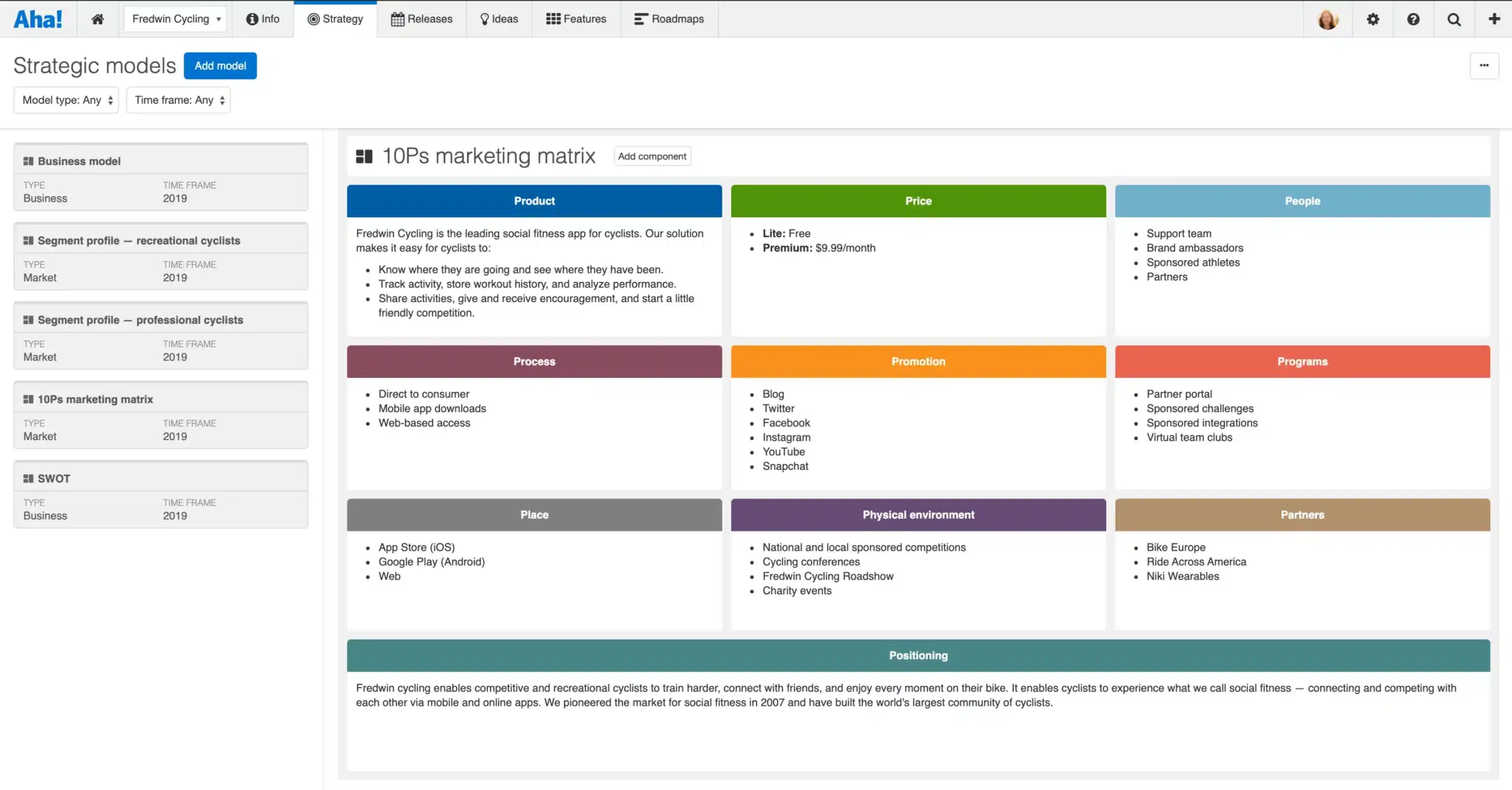
(Image Source: Aha.io)
Any suggestions for some additional Marketing Ps?
PS – Check out our latest case study that shows how we helped one company double their leads!
Why you need a marketing strategy?
The goal of a marketing strategy is to grow the company by reaching, converting and retaining new customers. So you need one if growth is important to your company.
I can’t imagine a company that doesn’t need one. The main issue usually comes in the form of time, money and resources.
Some of the biggest challenges I see with smaller companies is the CEO and leadership team misunderstands marketing as advertising or sales. They often have a bad history of seeing results from marketing so they may undervalue it.
This is not only a shame. It is a big mistake. Every company needs a marketing strategy and the budget and resources to support it.
Once you have budget and resources, a marketing strategy helps your company direct those marketing resources to where they will provide the greatest ROI. In fact, according to one recent study, companies that document their marketing strategy are 4x more likely to achieve success in their marketing programs.
Documenting your marketing strategy is also helpful because it helps you to align your team around all the various elements of your marketing strategy. This can also help marketers to identify the non-marketing employees who can help create and share content.
Here is an interview I did a few years ago on the challenges of documenting your marketing strategy:
Companies are more likely to succeed with their marketing strategy when they document:
- The business goals you are trying to achieve
- The main components of your marketing strategy
- Your target audience and what needs they have
- The customer outcomes you hope to achieve
- How plan to map content and campaigns to each stage of the buying process
- How you’ll measure and optimize success over time
Your marketing strategy defines the vision for your marketing activities. This keeps all functions of your company and your marketing team focused on achieving your goals: reaching, converting and retaining profitable customers.
Marketing Strategy vs Marketing plan
Marketing strategy and marketing plan are not the same thing.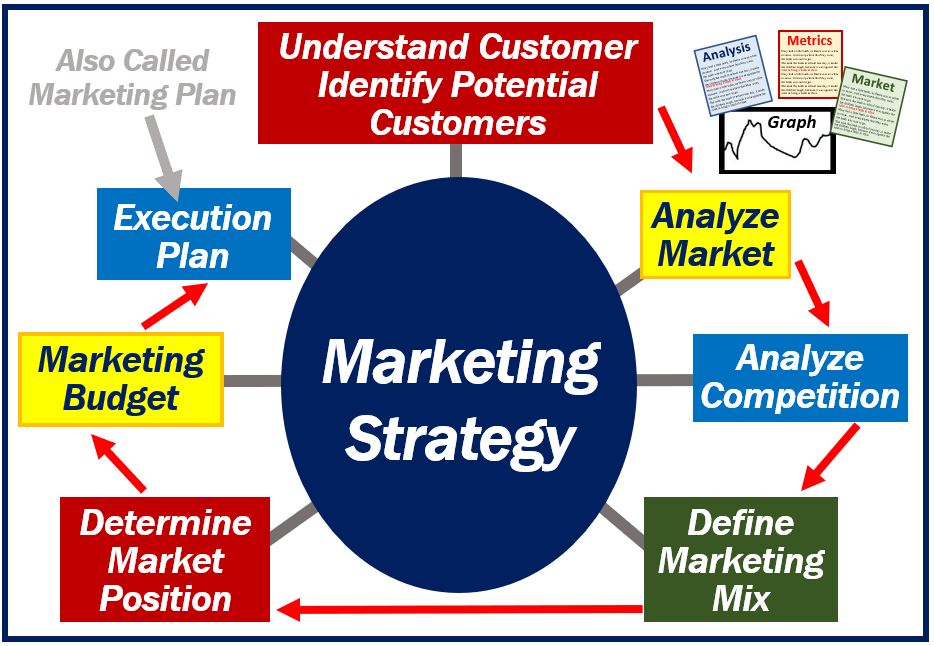
Your marketing strategy outlines what you want to do and why you want to do it. Once you have approval of the strategy, its time to unpack the details into a marketing plan.
Marketing plans define the details of who does what, when, where and for how much. Your marketing plan will define the content you will create, the landing pages that will be designed, the events you will attend, the websites and social platforms you want to promote on.
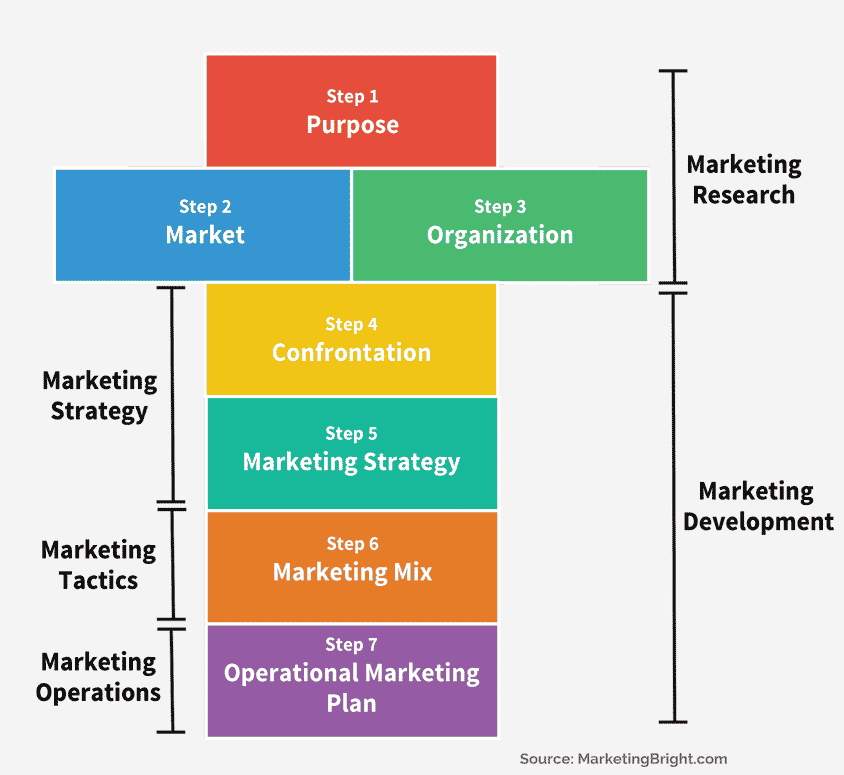
The marketing plan also defines the timeline of activities in both a content calendar and a project plan format.
Your marketing strategy should remain relatively stable over time unless you have significant changes in your expected results, target audience or product portfolio.
Marketing plans, on the other hand, should change every month, quarter or year depending on what works and what activities buyers are engaged in.
Marketing strategy vs marketing campaigns
If marketing strategy is a relatively stable, long-term picture of how you plan to achieve growth with marketing.
And marketing plans lay out the details, then marketing campaigns consist of one of those individual elements of the marketing plan.
Marketing Campaigns almost by definition are time-based activities that test a particular message to a specific audience or on a specific marketing channel.
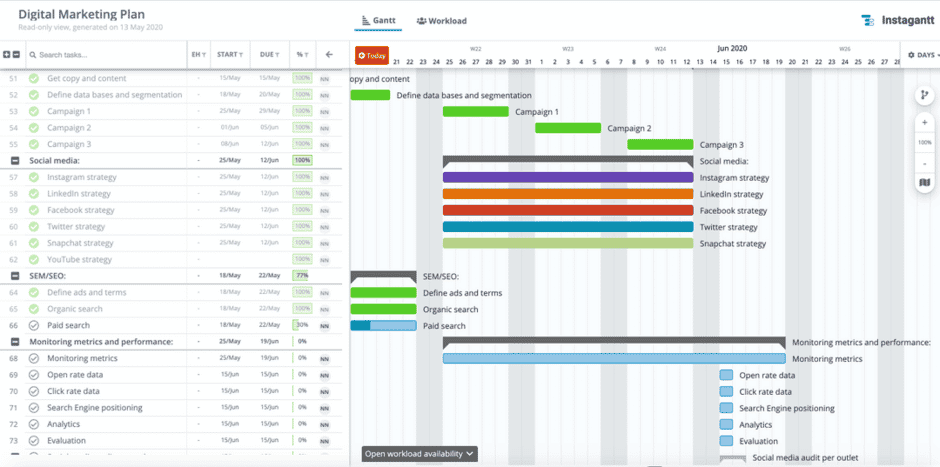
(Image source: Instagantt)
Here at Marketing Insider Group, we only support “always-on” marketing activities for ourselves and our clients. When you publish quality content, on a frequent basis, you not only get positive results, your revenue and ROI compounds or builds momentum over time
Here’s a visual showing the compounding marketing ROI of about a dozen of our clients doing always-on content marketing:

What does a marketing strategy look like?
An effective marketing strategy creates a virtuous cycle of reaching new potential customers, engaging them with quality content, converting them when they are ready to buy, retaining them as loyal customers and learning what works best along the way.
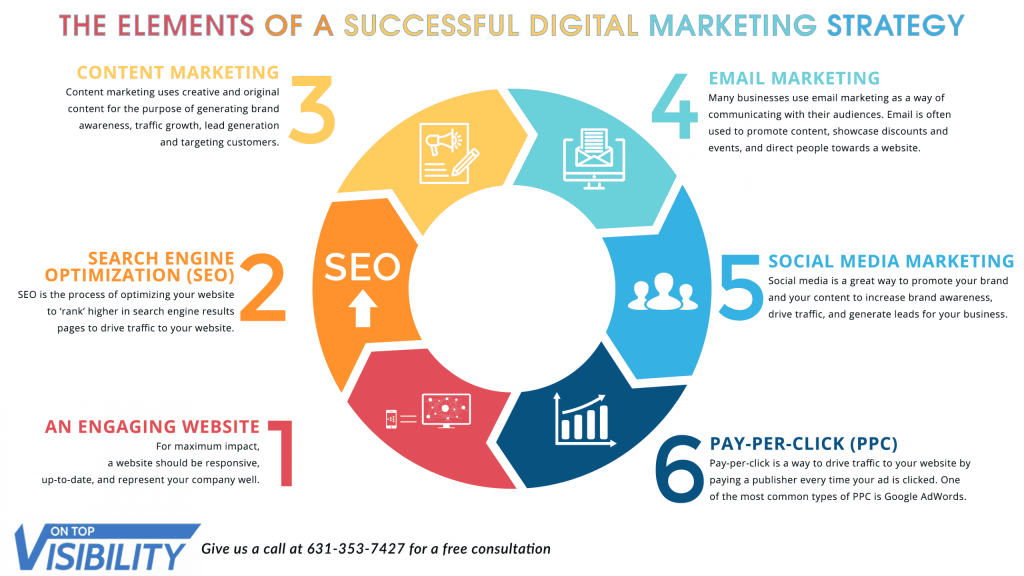
(Image source: OnTop Visibility)
Here are the steps to an effective marketing strategy:
Step One: Define Your Marketing Strategy Business Case
The business case for your marketing strategy defines the measurable goals you plan to achieve FOR THE BUSINESS. This typically includes sales, revenue, and acquiring new customers.
Growing brand awareness is nice but brand awareness doesn’t pay bills. Marketing must have measurable business goals and objectives.
But your marketing strategy business case should also include how to retain customers, and how to make sure you’re spending the company’s money wisely (ROI).
The business case for your marketing strategy defines the measurable goals you plan to achieve FOR THE BUSINESS. This typically includes sales, revenue, and acquiring new customers.
Growing brand awareness is nice but brand awareness doesn’t pay bills. Marketing must have measurable business goals and objectives.
But your marketing strategy business case should also include how to retain customers, and how to make sure you’re spending the company’s money wisely (ROI).
Step Two: Gather Your Audience Research
Lots of companies create buyer personas that suck. They identify the demographics of their target audience, they give them a silly name like “Millennial Mary.”
But they don’t talk about the things that are actionable and really matter:
- the questions they ask,
- the keywords they use,
- the content they consume, and
- the channels where they are most engaged.
When we get started with clients, we ask a few directional questions about your audience and your competitors. We use that information to create topic clusters based on pain points, challenges, buyer signals, and competitive gaps.
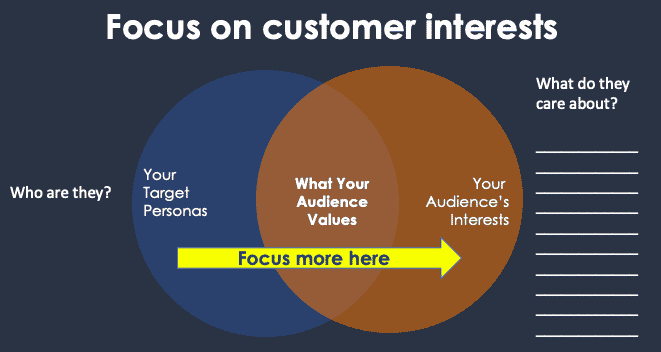
We then identify an annual content plan that maps these topics to the questions your buyers ask. Then we create content that answers those questions. And we publish them every single week.
And we look at whether these topics are resonating and driving engagement with your target audience.
Step Three: Identify Your Marketing Process and Tools
This step focuses on what needs to get done in your marketing plan, who is going to do it, what tools you need, and when they will get it done.
I suggest looking at 5 steps:
- Planning
- Creating
- Publishing
- Sharing
- Measuring / Optimizing
Here are the tools we use in our Marketing Strategy:
- SEMRush is our keyword planning and competitive research tool
- Buzzsumo and AnswerThePublic help us with identifying the content our audiences want
- DivvyHQ is our content planning and calendar tool
- WordPress is our website CMS
- Zemanta is our paid content promotion platform
- Hootsuite is what we use to plan our social sharing of rall 3 employees
- Mailchimp is what we use to share our content to our email subscribers
- Calendly is our appointment setting application
- ClickFunnels is what we use to build our landing pages
- Stripe is what we use to process client payments
- Google Analytics is what we use to track our traffic, engagement, and conversions
That’s our MarTech stack at Marketing Insider Group. We only have a couple dozen customers so we don’t use a CRM tool like Salesforce or Hubspot. Automated emails setup in Mailchimp is all we need for Marketing Automation.
But if you work for a larger company you may need some more enterprise solutions.
Step Four: Content and Campaigns
It’s time to plan out what content and campaigns you are going to run. We always suggest creating content that focus on your customer wants and needs.
Ask: “what is our customer’s biggest challenge?” Then write content that solves that problem. You can even use Google auto-fill to answer this question. What do marketers need? Google auto-fill can tell us:
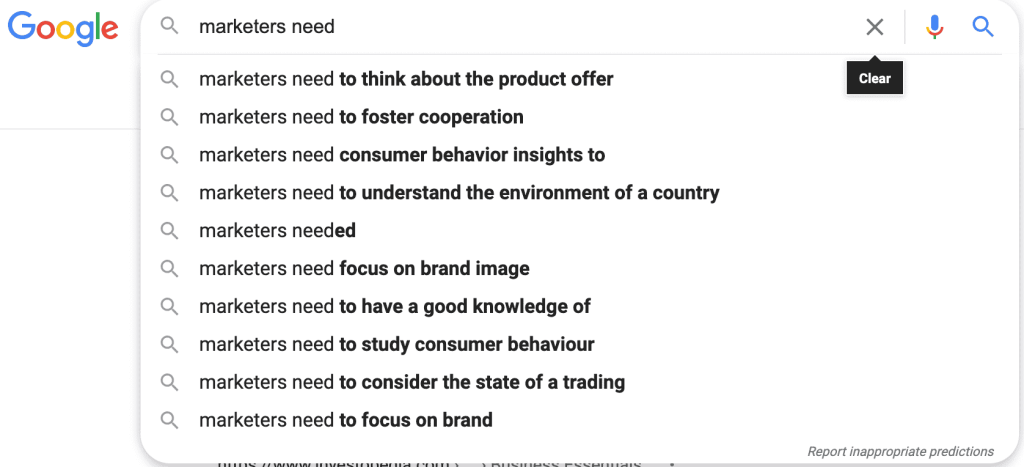
Step Five: Pick Your Media
As I mentioned above, we want to think in terms of paid, owned, and earned media.
Paid media is anything you need to do to spend money to reach your audience. Most people think this is all marketing is (spending money). And too many marketers waste money jumping right into paid media. And this is why too many CEOs think marketing is just a waste of money.
But if we start with those things we can own and earn, then use paid to further accelerate that momentum, that’s where the real power of a solid marketing strategy come to play.
- Owned Media includes your website and your social channels. Strong brands have a growing and engaged audience on their website.
- Earned media includes social media, email subscribers, and PR.
- Paid media includes paid search (PPC), banner ads, paid social, or our preference: content promotion.
Integrating across paid, owned, and earned is the best way to maximize your marketing strategy.
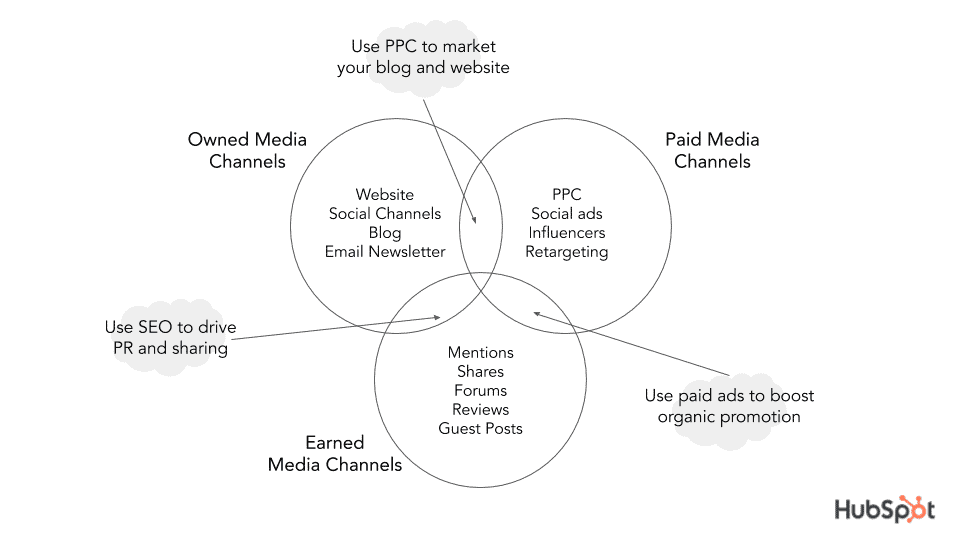
(Image source: Hubspot)
For example, once our clients publish their weekly blog posts on their website (owned media), they share them on social media and to their email newsletter (earned media) and then promote their highest converting content to google search or other promotional channels (paid media).
This process is delivering measurable Marketing ROI from our client’s marketing strategy!
Step Six: Measure and Optimize
In step one we identified the business goals and the business case for our marketing strategy.
Now it’s time to measure specific metrics against each goal:
- Reach new customers: website visitors
- Engage new customers: email subscribers, bounce rate, organic social shares
- Conversion: leads, sales, revenue per customer
- Retention: Customer Lifetime Value (CLV), Upsells / Cross-sells, Retention rate
- Marketing Efficiency: Marketing ROI, Customer Acquisition Costs (CAC)
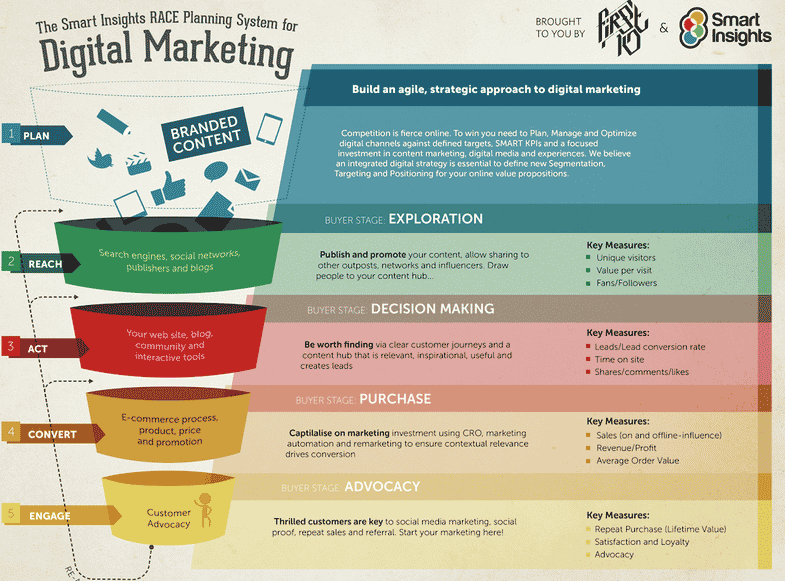
(Image source: SmartInsights)
You are now able to measure what you wanted to do, what you did, and how well it performed.
And this is where too many marketers fall short. They might count new customers or leads. But they don’t identify which content and campaigns and programs to continue or stop. Shift budget to the things that worked. Stop doing the things that didn’t.
This creates a continuous improvement loop that drives higher Marketing ROI.
Marketing Strategy Conclusion
Marketing is so much more than just advertising. It is a strategy to drive growth for your business.
An effective marketing strategy will define how you will do this for your company.
In this article, we covered what a marketing strategy is, why it’s important, and the main steps to create an effective marketing strategy.
If you need help crafting a simple marketing strategy that delivers growth through Weekly Blog Content, then contact us today!


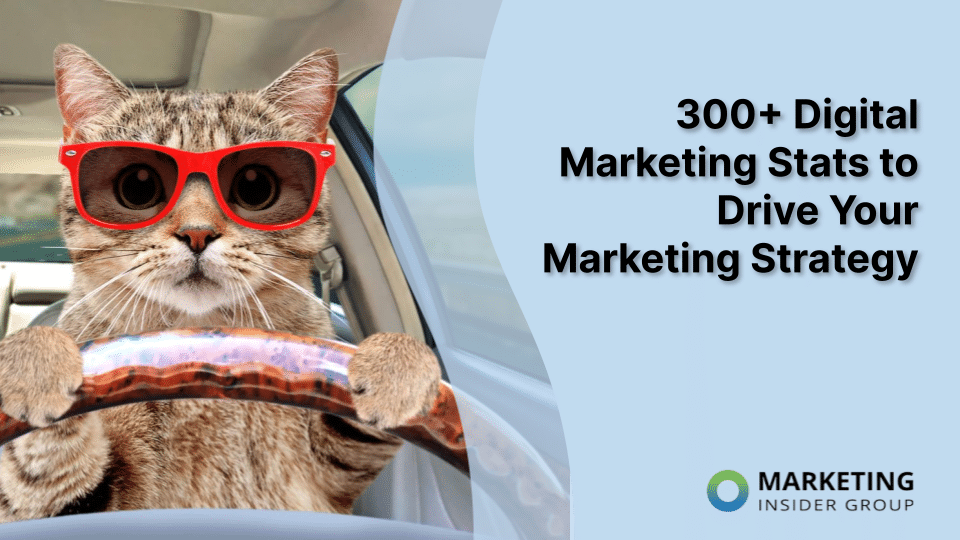

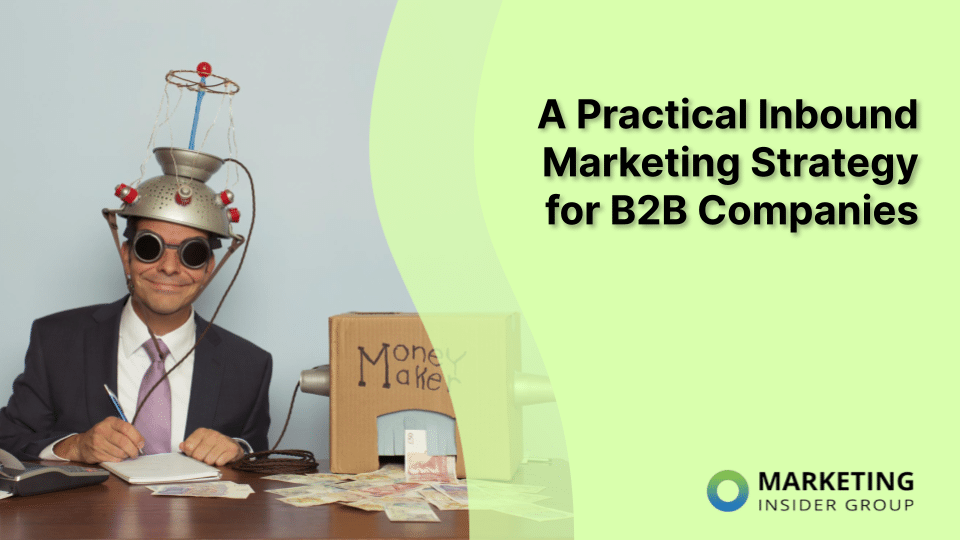
Great stuff, Michael. It’s so important for marketers to constantly revisit: do we have a defined strategy and plan and how do we need to revise to stay focused and relevant?
This is a “must read” for both content marketing newcomers as sell as long-term “veterans.” Newcomers will gain a working vocabulary as well as a sense of how the elements of content market work together as a team. Many veterans of content marketing will discover tools and steps they have inadvertently overlooked.
Thanks so much Monica. I’m way behind on replying to comments and really appreciate your support. Hope all is well!